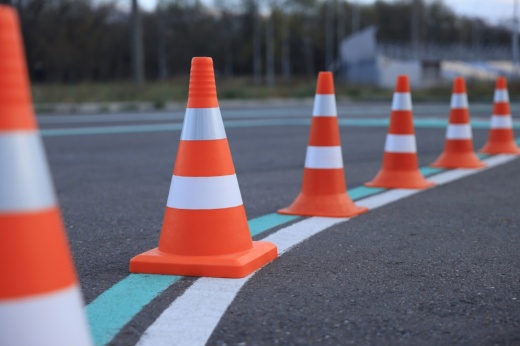A partnership of key transportation agencies in Central Texas aims to get one step ahead of the newest wave of transportation innovation.
What’s happening?
Regional transportation authorities and researchers have joined forces to create a cutting-edge test track at The University of Texas at Austin’s J.J. Pickle Research Campus in North Austin, paving the way for improved safety and consistency.
The new Safety, Mobility, Autonomy, Research, and Testing Track, or SMARTTrack, is a collaborative effort led by UT’s Center for Transportation Research, in partnership with Capital Area Metropolitan Area Planning Organization, Texas Department of Transportation, the city of Austin, the Central Texas Regional Mobility Authority, and other industry leaders.
Designed to enhance traffic safety and efficiency, the three-tiered project focuses on advancing smart transportation infrastructure as automated vehicles increasingly roam local streets. SMARTTrack will be used to test emerging transportation technologies, such as advanced driver assistance systems, autonomous vehicles, AI-integrated traffic cameras and more.
SMARTTrack’s three-tiered system includes:
- Tier 1: Closed course test track on the J.J. Pickle Campus
- Tier 2: J.J. Pickle Campus research facility for software and hardware testing and analysis
- Tier 3: Select roadways chosen in partnership with CAMPO and local entities to implement and test transportation technology
The project is slated to be funded by CAMPO and TxDOT through a combination of state and federal funds.
The university and TxDOT have applied for an estimated $18 million through the Federal Highway Administration Carbon Reduction Program; however, approval is still pending. The TxDOT Materials and Test Division has been applied to for an additional $15 million in funding for SMARTTrack, also pending approval.
All maps are still in the conceptual phases.
Why now?
In the wake of a series of wayfinding and automated technologies having hit the Austin streets in recent years, TxDOT released its Artificial Intelligence Strategic Plan this past December, highlighting plans to collaborate with technology partners and local stakeholders in order to explore AI application throughout the agency’s operations as well as in real-world traffic management.
During a recent update Feb. 10, Miguel Arellano, a deputy district engineer for TxDOT, told CAMPO board members the state's transportation department has committed to the construction of the SMARTTrack at the J.J. Pickle Campus.
“Transportation technology, in my opinion, is that golden ticket to get to zero fatalities,” Arellano said. “...The root cause of fatal crashes is driver error.”
He explained that recent studies have shown a 90% reduction in fatalities when local agencies fully implement driver assistance systems and technology.
Amit Bhasin, director for the university’s Center for Transportation Research, said SMARTTrack testing can also be used to manage traffic and improve infrastructure.
“This isn’t just about planning for the integration of self-driving vehicles into our existing infrastructure. We need to exploit the technological advances being made across the transportation industry to ensure improved safety for all commuters,” Bhasin said. “This is an effort to regulate and make sense of all the new variables affecting transportation in Texas and the nation—from autonomous and self-driving vehicles to the regular pedestrian trying to find her way home safely."
The research team, in coordination with the city, has already installed what’s known as edge computing and cameras with machine vision at the Burnet Road and Braker Lane intersection. The AI-powered cameras and processing power can be used to identify vulnerable road users, such as pedestrians.
These applications are particularly useful in school zones, Bhasin said. The cameras can identify school buses and freight vehicles, allowing for slight adjustments to traffic signals that help reduce congestion, minimize harsh braking, and improve overall traffic flow.
Implementing these types of technologies can be used to give real-time warnings and even send messaging to autonomous vehicles for updated wayfinding surrounding road closures and increased pedestrian traffic.
Additionally, the data collected from the CTR team can be extended beyond dense urban intersections—it can also be applied in rural areas to mitigate issues like animal collisions in blind spots.
The impact
With the rise of new technologies shaping transportation and safety, it's essential to collect real-world data in a controlled environment, Bhasin said.
The research team intends to continue analyzing data for 1 to 2 years post-installation to evaluate performance and outcomes. The data collected can then be used to develop “blueprints” for other cities and agencies by adapting Austin’s data-driven insights for their own deployments, Arellano added.
As transportation technologies continue to emerge, local agencies are finding the different solutions don’t always fit together, which can be expensive and complicated as multiple vendors are vetted and tested, he said. By making things more consistent, cities can save money, avoid unnecessary work, and ensure projects run smoothly across the region.
“We're talking about trying to create a system approach that our whole region can plug into, so that way you can take plans, specifications, or standards off the shelf at Texas SMARTTrack and apply in your city, your county or on a state system,” Arellano said.





